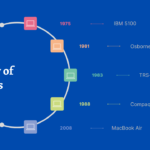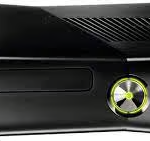A household name synonymous with gaming, PlayStation has, since its inception in 1994, shaped the world of video gaming, bringing cutting-edge technology, immersive gameplay, and vibrant storytelling right into our living rooms.
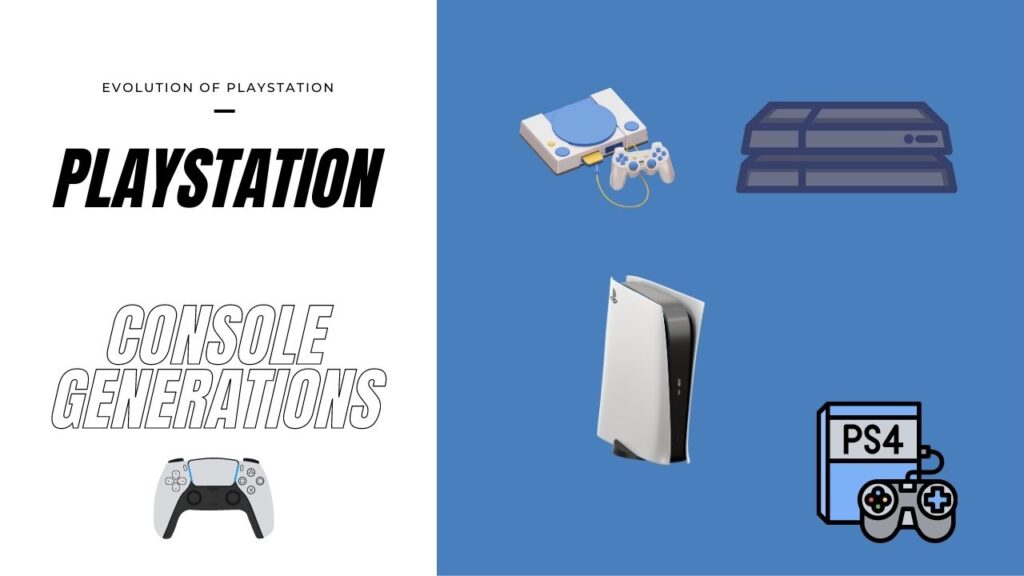
With each new generation of PlayStation consoles, Sony Interactive Entertainment has consistently pushed the boundaries of technology, delivering cutting-edge graphics, immersive gameplay, and a vast library of exclusive titles.
From the original PlayStation to the latest PlayStation 5, each console generation has left a lasting impact on the gaming community. In this article, we will explore the evolution of PlayStation console generations, highlighting the advancements, iconic games, and the impact they have had on the gaming industry.
Table of Contents
PlayStation (PS1 – 1994)
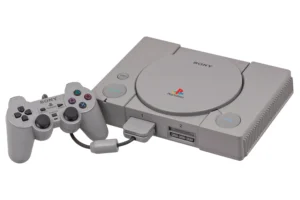
Ah, the PlayStation! This is where it all began. It’s a system that redefined gaming and a name that became synonymous with an incredible gaming experience.
The PlayStation, fondly known as the PS1, was released in December 1994 by Sony Computer Entertainment. It was a game changer (pun totally intended) in the world of home console gaming.
The PS1 was the first home console to sell over 100 million units worldwide, proving that gaming was no longer a niche market but a booming industry.
The PlayStation boasted 3D polygonal graphics, high-quality sound, and a wide range of games that attracted both seasoned gamers and newcomers alike. With game-changing titles like ‘Final Fantasy VII,’ ‘Metal Gear Solid,’ and ‘Resident Evil,’ the PS1 set a high bar for future consoles.
PSOne (2000)
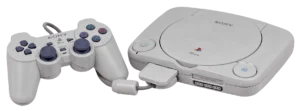
Launched in July 2000, the PSOne was essentially a more compact, redesigned version of the original PlayStation (PS1). Despite its smaller form factor, it was compatible with all existing PlayStation games and accessories. This console came with a fresh new look, rounded corners, and a more streamlined user interface.
The PSOne emerged as a more affordable alternative for those who couldn’t quite make the leap to the recently released PS2. It was a clever move by Sony, as it allowed the company to tap into a more price-conscious segment of the market while also extending the lifespan of the PlayStation’s extensive game library.
PlayStation 2 (PS2 – 2000)

Behold the PlayStation 2, the king of the console jungle! With a swagger that was well-earned, this console became the best-selling video game console of all time.
Launched in March 2000, the PS2 boasted significant enhancements over its predecessor. It played DVDs and had backward compatibility, meaning it could play most PS1 games.
This not only gave it an extensive library of games from the get-go but also turned it into a multifunctional entertainment device. It was also the birthplace of network gaming with the PlayStation Network Adapter.
This was the era of unforgettable games like ‘God of War,’ ‘Gran Turismo 3,’ and ‘Metal Gear Solid 2,’ ‘Shadow of the Colossus,’ ‘Grand Theft Auto III,’ and ‘Kingdom Hearts’ were born during this generation.
PlayStation 2 Slim (PS2 Slim – 2004)
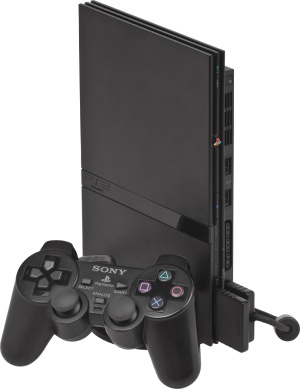
Launched in October 2004, the PS2 Slim took what was already great about the PS2 and made it even better. It was introduced at a price of $299, making it an appealing proposition for both existing fans and newcomers alike.
The PS2 Slim’s design was a substantial departure from the original PlayStation 2. With its slim profile and lighter weight, this new model was all about convenience and portability. It didn’t just stop at aesthetics, though.
The PS2 Slim was notably quieter in operation than its predecessor, meaning your gaming sessions could now be a lot less noisy.
One of the most significant additions to the PS2 Slim was the built-in Ethernet port. This enhancement was a game-changer.
Gamers could now play certain multiplayer games online, opening up a world of connectivity and competition. This was a significant stride toward the online gaming culture that we are so familiar with today.
PlayStation Portable (2004)
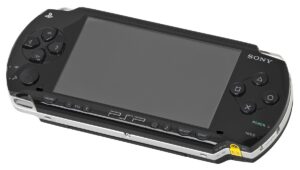
This little device was Sony’s ambitious foray into the handheld gaming market, directly rivaling the likes of Nintendo’s GameBoy and DS.
Introduced to the world in 2004, the PSP was a fresh breath of air in the realm of portable gaming. It sidestepped the split-screen design favored by its contemporaries and instead, introduced a single-screen layout flanked by controls on either side. This design has since become a standard for handheld consoles, with devices like the Steam Deck adopting a similar configuration.
But the PSP wasn’t just about playing games on the go. Oh no, it was much more than that. It is packed with WiFi capabilities, allowing users to connect to the internet and compete with other gamers worldwide. Its broad, bright screen also doubled as a portable media center, capable of audio and video playback, turning it into a versatile entertainment device. Imagine watching your favorite movies or listening to your music playlist on your gaming console while on a long trip – the PSP made that possible.
The PSP was also a testament to Sony’s rich gaming history. It boasted an impressive library of games, from the adrenaline-filled races in ‘Wipeout Pure’ to the strategic battles in ‘Final Fantasy Tactics: The War of the Lions.’
Not to mention, the PSP versions of console favorites like ‘God of War’ and ‘Grand Theft Auto.’
PlayStation 3 (PS3 – 2006)
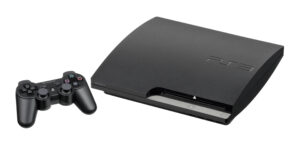
Next up, we have the PlayStation 3. It was the dawn of a new era for gaming and media, with the introduction of Blu-ray discs and online gaming services.
The PS3 was launched in November 2006. It was a powerhouse, featuring a custom Sony processor that pushed the boundaries of what games could look like. The console also introduced the PlayStation Network, Sony’s online service for downloading games and streaming media.
Titles like ‘Uncharted,’ ‘The Last of Us,’ and ‘Little Big Planet’ made this generation truly unforgettable.
PlayStation 3 Slim (2009)
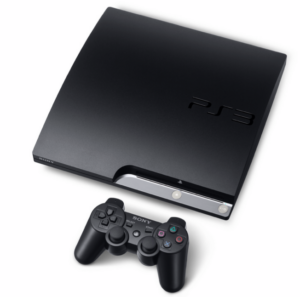
The PS3 Slim came to the market at a release price of $299 and quickly won the hearts of many gamers. It ended up selling an impressive estimated 16 million units, underscoring its popularity within the gaming community.
As the name suggests, the PS3 Slim was indeed slimmer and lighter than its predecessor. But it wasn’t just about the aesthetics. The console was notably quieter in operation, a significant improvement that meant less distraction and more immersion in your gaming experiences.
The PS3 Slim also saw a few minor tweaks to its software, enhancing the overall user experience. It introduced a redesigned logo and marketing design, symbolizing a fresh and updated identity for the PlayStation 3.
However, it’s worth noting that the PS3 Slim removed the hardware ability to run PS2 games. While this was a disappointment for some fans hoping to keep playing their PS2 classics, the PS3 Slim still offered access to an extensive library of high-quality PS3 games and digital content.
PlayStation Vita (2011)
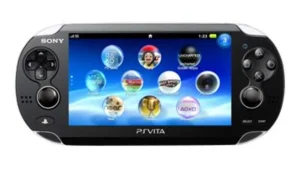
Released in December 2011, the PS Vita represented Sony’s renewed efforts in the handheld gaming market.
The PS Vita was essentially an upgraded PSP. Sporting a release price of $249.99, it introduced significant enhancements over its predecessor, both in terms of design and technology. The most noticeable change was the inclusion of dual analog sticks, a feature that makes it resemble modern handheld consoles like the Nintendo Switch.
In terms of tech, the PS Vita was a powerhouse. It was equipped with a multi-touch pad, improved memory, and superior RAM. These updates aimed to make the handheld gaming experience smoother, quicker, and more immersive. On the graphics front, the PS Vita boasted a vibrant 5-inch OLED display, delivering sharper and more lifelike visuals.
However, despite its impressive tech specs and advancements, the PS Vita didn’t manage to achieve a major hit status. One of the main factors contributing to this was a lack of AAA games. The PS Vita’s game library, while extensive, was seen by many as lacking those major, blockbuster titles that often drive console sales.
PlayStation 4 (PS4 – 2013)
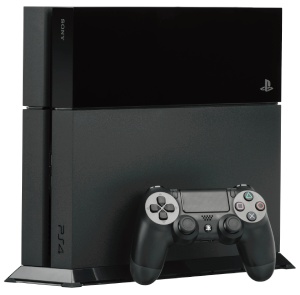
Enter the PlayStation 4, a veritable titan of the gaming industry, and Sony’s fastest-selling console at the time.
Released in November 2013, the PS4 was a mammoth success. It was all about sharing and connectivity, with features like ‘Share Play’ that allowed gamers to play games with their friends over the internet.
The DualShock 4 controller brought innovative features like the touchpad and the share button.
The PS4 era gave us games like ‘Bloodborne,’ ‘Spider-Man,’ and ‘God of War (2018),’ redefining what we could expect from console gaming.
PlayStation 4 Slim (2016)
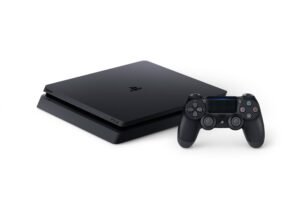
The PS4 Slim was impressive in its dimensions, boasting a form factor that was 30% smaller than its predecessor. Not only that, it was 16% lighter, making it a more portable and convenient option for gamers. But that’s not where the improvements ended. The PS4 Slim was also up to 30% more power efficient, making it a greener, more eco-friendly choice for the environmentally conscious gamer.
Despite these changes in design and efficiency, the PS4 Slim largely retained the technical specifications and capabilities of the original PS4. This means that you could still enjoy the same vast library of games and multimedia capabilities, but now with a slimmer, more efficient console.
In essence, the PS4 Slim was all about refinement. Sony took the powerful and popular PS4 and packaged it into a more compact, energy-efficient design without compromising on the gaming experience. It’s this balance of design and performance that makes the PS4 Slim a significant chapter in the PlayStation story.
PlayStation 4 Pro (2016)
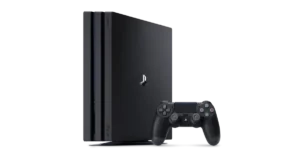
Released alongside the PS4 Slim, the PS4 Pro was Sony’s attempt at pushing the boundaries of console gaming, making it the most powerful console in the PlayStation family until the arrival of the PS5.
The PS4 Pro was a beast in terms of specs. It featured a more powerful GPU, ensuring that your games ran smoothly and looked fantastic. It had a higher clock rate, meaning that it could process data more quickly, delivering a smoother and more responsive gaming experience. But perhaps its most significant feature was its ability to support 4K resolution in games. This allowed gamers to experience incredible details and stunning visuals like never before on a console.
Despite being surpassed by the PS5 in terms of raw power, the PS4 Pro continues to be relevant and widely used. It boasts the same extensive back catalog of games as the standard PS4, meaning that there are still countless hours of fun to be had with this console. From indie gems to blockbuster AAA titles, the PS4 Pro lets you experience them all in stunning detail and fluid performance.
PlayStation 5 (PS5 – 2020)

Finally, let’s talk about the PlayStation 5. Unveiled in November 2020, this console is the future of PlayStation, taking gaming into a whole new dimension with cutting-edge technology.
The PS5 showcases impressive upgrades over the PS4, with significantly faster loading times, thanks to its custom SSD, and the capability of outputting 4K resolution at 120 frames per second.
The new DualSense controller with haptic feedback and adaptive triggers offers a more immersive gaming experience.
We are still in the PS5 life cycle so can’t talk about the best games. But we can name some great titles such as ‘Horizon: Zero Dawn,’ ‘Elden Ring,’ and ‘Final Fantasy XVI’.
